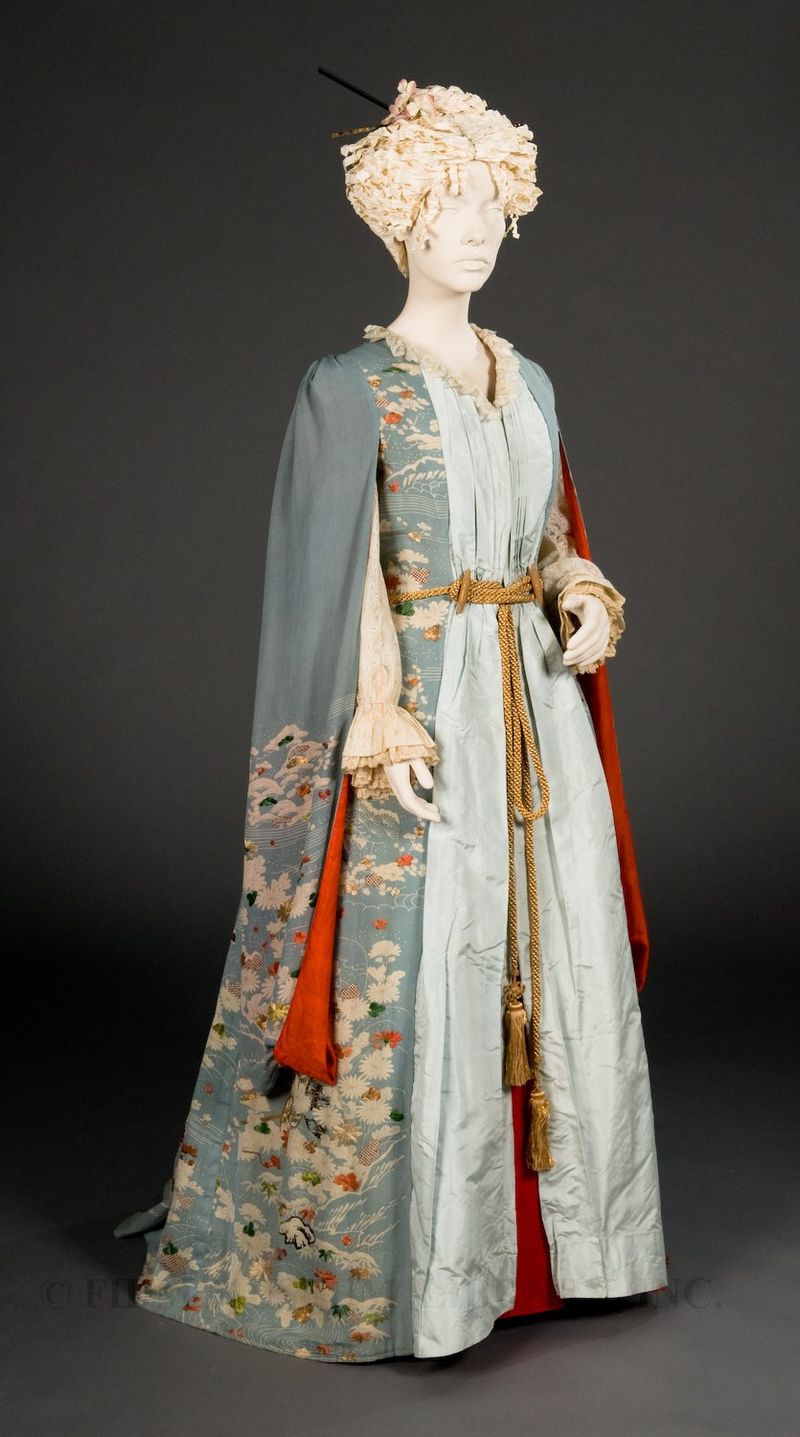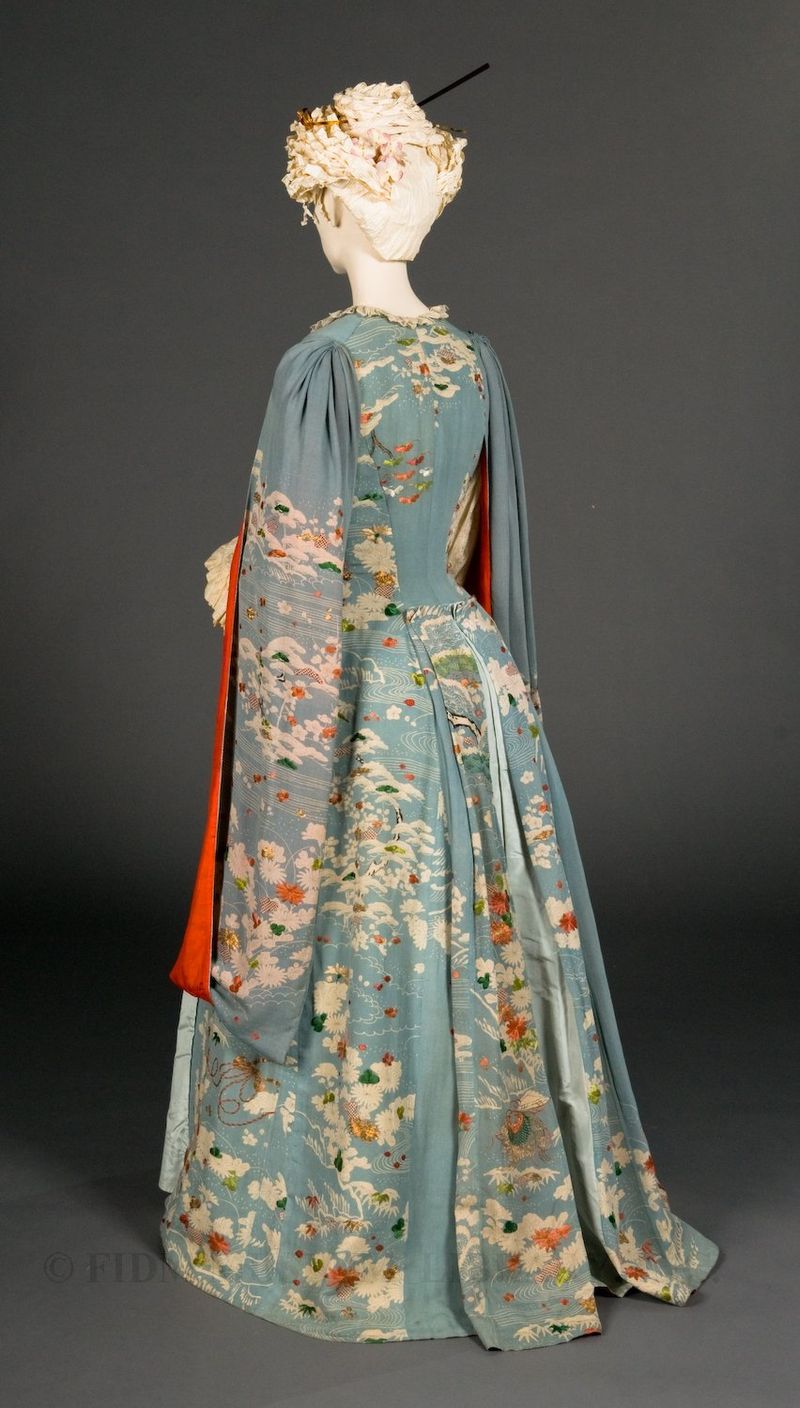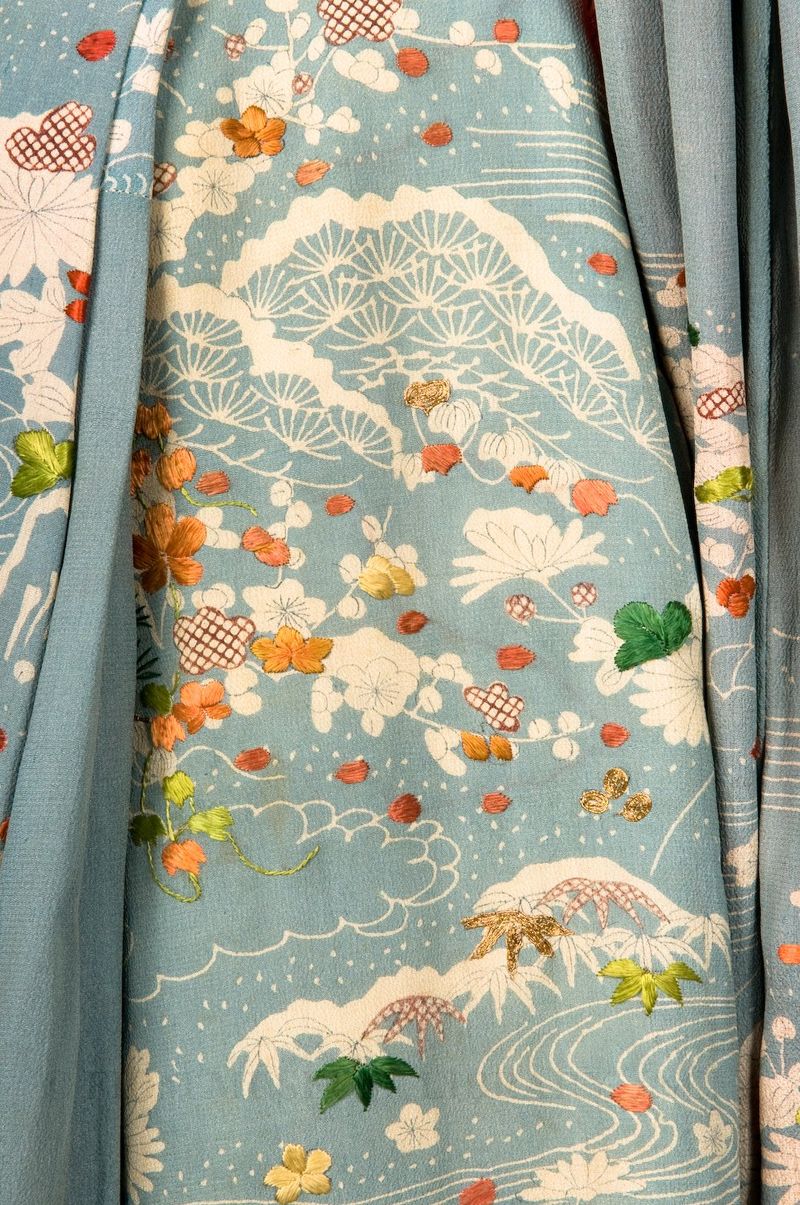Kimono dressing gown
Japanese styles are always attractive in negligees.-The Delineator, April 1903
 Kimono dressing gown c. 1885 Gift of Anonymous Donor 80.40.1
Kimono dressing gown c. 1885 Gift of Anonymous Donor 80.40.1
Beginning in the late 19th century, Asian decorative arts, and those of Japan in particular, had a tremendous impact on Western culture. Many Americans and Europeans traveled to Japan, often returning with textiles and garments that were soon converted to familiar Western garments. This blue dressing gown began as a Japanese furisode, or "swinging sleeves" kimono, a type worn only by young unmarried women. It is a particularly creative example of how Japanese dress could be transformed into fashionable Western dress. Through the addition of princess seams, lace undersleeves and inserts of pale-blue taffeta at front and back, the furisode kimono became a stylish Western dressing gown, complete with bustle. Regardless of these Western elements, the dressing gown is strongly evocative of Japan, particularly in its retention of the crimson lining often found in women's kimonos.
The white and blue pattern was created using the katazome technique. Katazome is a type of resist dying in which a stencil is used to apply rice paste to the areas of fabric which will remain white. When the rice paste dries, the fabric is dyed. The katazome process usually results in fabrics with only 2 colors: white and the color that has been overdyed. Further embellishment often takes the form of multi-colored embroidery. Here, rust, gold and green silk floss and metallic gold thread were used to embroider specific motifs at random. The darker cross-hatch pattern was hand-painted.

